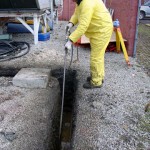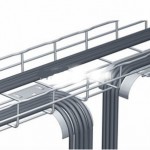CCTV Installation and wiring
Prior to any CCTV installation project, the cable drums should be checked for any damage. By checking the outer layer of the cable, any mishandling or damage can be spotted. When it comes to CAT5 or coax cable, cable drums should be checked for any short circuits.
Before you start laying the cables, the CCTV cable run route should be inspected. Once a viable route for CCTV cable run has been identified, the total required cable length should be established. Places where you require a drill and places where cables should be terminated needs to identified.
If you require joint cables, you should use appropriate junction boxes with correct IP rating. It is important to leave adequate overlap of the cables for any future splicing operations. In general, five to two metres of cable is left for splicing.
If a cable end is exposed, it must be fitted with water resistance caps or insulated crimps. You will insulate crimp terminal butt for wire joints in any electrical stores. Any loose cables should be placed to avoid any damage to cables and EMI interference.
Whenever it is possible cables should run inside a conduit for extra protection. There many types of conduits available in the markets and they also come in different sizes. When selecting the conduit correct size and type should be selected. For example, outdoor cable run requires special conduit with UV protection. In environments such as a railway station, special metal conduit needs to be used to avoid electromagnetic interference.
When cables are run underground extra care should be taken, it is advised to lay the cables on a bed of sand at least 50mm deep, and back filling with another 50mm.
When coax cables are placed on a cable tray extra care should be taken in regard to the minimum bending radius. Minimum bending radius should not be smaller than 5 times the diameter of the cable.
Do you want to know more about CCTV installation? why not join our 3 day CCTV installation training.


